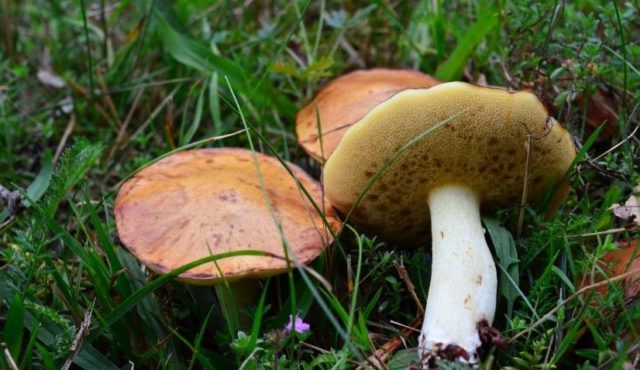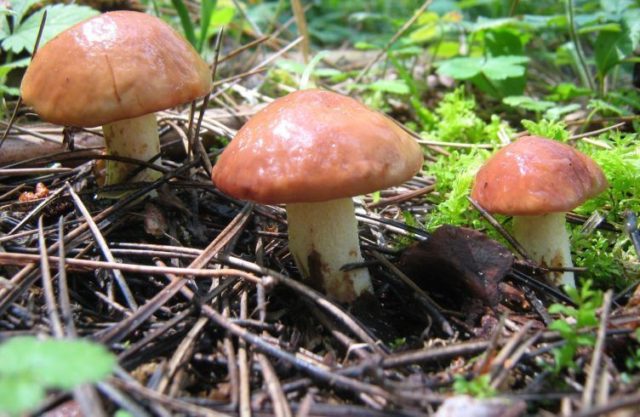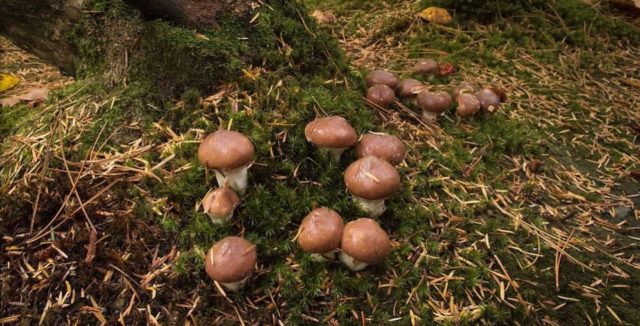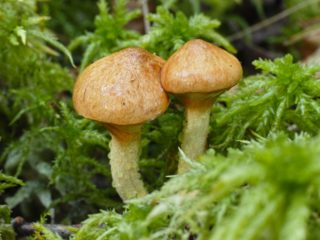Content
All experienced mushroom pickers are familiar with a very simple rule: if there is warm rain, you can soon go on a “quiet hunt.” The physiology of mushrooms is such that after rain, boletus grows very, very quickly, being one of the fastest growing species in the Russian climate. Next we will consider how many days this species develops to reach an acceptable size for collection.
How fast they grow
The question about the speed of development of forest products is inherently a little incorrect. The main part, the mycelium, grows constantly and at approximately the same speed. She is not bothered by weather conditions, even frosts.
The aerial part, the fruiting body, is a completely different matter. Its pace very much depends on various conditions: air temperature and humidity, soil richness, available amount of moisture, etc. Therefore, if we talk about how much boletus grows over time, it is impossible to give a definite answer.
In the absence of rain, but on sufficiently moist soil, development can last from 7 to 12 days, while compliance with all “ideal” conditions can lead to emergence and ripening within 2-3 days.
What does speed depend on?
The speed of appearance and development not only of butterfly, but also of any other species depends on how well the mycelium feeds and breathes. This is a fairly complex living organism, a cross between animals and plants. The physiology of the mycelium is quite complex, and the influence of even one seemingly insignificant factor on it can significantly reduce or increase both its growth rate and that of the fungi.
The first factor is well-moistened soil. The second is the warm and fairly well-warmed top layer of soil in which the mycelium is located.
It is the combination of these factors, and not just the abundance of water, as many people think, that leads to the appearance and rapid development of fruiting bodies. If you pay attention to where butter beetles are mainly found, they almost never appear in dark places.
For example, they practically never occur in spruce forests, and the point is not only that this species prefers pine or larch for mycorrhiza. The key point here is the lack of sunlight and the accompanying heat necessary for formation.
The recommended temperature regime is a temperature that has been stable for 3-4 days in the range from + 18 °C to + 30 °C. It is during this time that the soil has time to change its temperature by 15-20 cm in accordance with the air temperature.
Butterflies are fast-growing mushrooms; under normal conditions they grow by 0.9-1.5 cm per day. With short-term precipitation in the form of warm rains and the establishment of good sunny weather after them, the pace increases significantly.
How quickly boletus grows after rain
After rain, boletus appears and grows at a rate 3-5 times higher than the normal conditions discussed earlier. Literally 2-3 days after the rain, the first ones appear, and you can go to collect them.
In sunny weather
If sunny weather sets in after the rain, then the speed increases to 1.5-3 cm per day, and the first species appear from the ground already on the 3rd day. They reach their maximum height on the 5th day.
In cloudy weather
In cloudy weather, the rate is slightly lower, since the soil will be heated to a lesser extent, and boletus grows more slowly. The first ones will appear from the ground 4-5 days after the rain, and they will reach their maximum size after 7-8 days.
Conclusion
After rain, boletus grows more actively than under normal conditions. If the formation of a fruiting body under normal conditions takes about 10 days, after rain these periods are reduced by several days, depending on conditions. Ideally (sunny weather), it is recommended to collect forest products on the 5th day, in cloudy weather - on the 7-8th day.











